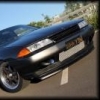Rb25 Injector Leak Question
Announcements
-
Similar Content
-
Latest Posts
-
Couldn't help but share the pics of my $350 "Hella" oil level sensor that arrived from totalengines via eBay today. It's like they're not even trying anymore ... And I think that's sad.
-
I've got a 2011 J50 that I imported six years ago. The unmodified factory AV system date and time has always been correct ( Japanese timezone of course ) up until last month. About two weeks ago, at engine start, the system wished me a happy new year ( in Japanese of course ). I can't think of anything that would make the system think that the date had changed, unless the GPS component has failed/reset somehow ? I checked the GPS reception in the system settings, and it can still see the satellites. Has any other J50 owner had this happen ? It's no biggie, just annoying that it tells me the wrong date anytime I start the engine. 😅
-
By Dose Pipe Sutututu · Posted
Love following your adventures on IG, hopefully if you're still around in Japan when we visit again wouldn't mind going for a few beers with you (that's if you're keen on hearing how I hate Nissans). -
ok so if i wanted to go 18's i would go for 8's in front 30+ or 32+ off set at front and the back 9 would be ok? what offset should i aim for.. then can i do some hunting for wheel rim choices.. If i get this - will this fit all around: Size: 18 x 8.5 +37 - n what tyres size tyre should i get for front n back?







Recommended Posts
Create an account or sign in to comment
You need to be a member in order to leave a comment
Create an account
Sign up for a new account in our community. It's easy!
Register a new accountSign in
Already have an account? Sign in here.
Sign In Now